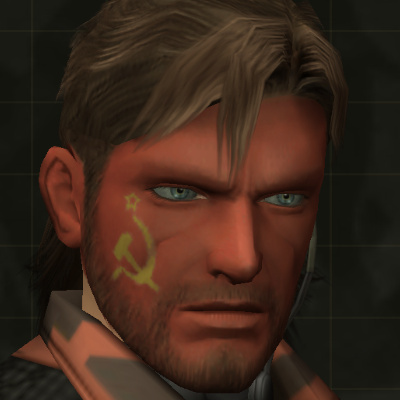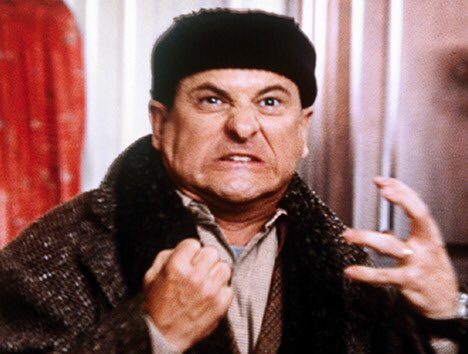Diego Rivera (Spanish pronunciation: [ˈdjeɣo riˈβeɾa]; December 8, 1886 – November 24, 1957) was a prominent Mexican painter. His large frescoes helped establish the mural movement in Mexican and international art.
Rivera had four wives and numerous children, including at least one illegitimate daughter. His first child and only son died at the age of two. His third wife was fellow Mexican artist Frida Kahlo, with whom he had a volatile relationship that continued until her death. Leon Trotsky lived with Rivera and Kahlo for several months while exiled in Mexico.
Due to his importance in the country’s art history, the government of Mexico declared Rivera’s works as monumentos históricos. As of 2018, Rivera holds the record for highest price at auction for a work by a Latin American artist. The 1931 painting The Rivals, part of the record-setting Collection of Peggy Rockefeller and David Rockefeller, sold for US$9.76 million.
Biography
He was born in the city of Guanajuato, Guanajuato, on December 8, 1886. At the age of eleven, he entered the National School of Fine Arts, San Carlos, where he was a student of Andrés Ríos, Santiago Rebull, José María Velasco, Leandro Izaguirre and Félix Parra. In 1902, he left the School of Fine Arts and moved to the countryside, where he dedicated himself to painting landscapes with absolute freedom, as well as to the study of pre-Columbian history and Mexican archaeology with Félix Parra. He also became friends with the engraver José Guadalupe Posada.
He was one of the most renowned visual artists and intellectuals of the early 20th century. He belonged to the group of Mexican muralists, mainly formed by José Clemente Orozco and David Alfaro Siqueiros. He cultivated painting, drawing, engraving and sculpture; he also had an enormous interest in architecture and was one of the first collectors of pre-Hispanic art.
In 1907 he presented his first exhibition at the San Carlos Academy, which won him a scholarship to study in Europe. In Madrid, he worked with Eduardo Chicharro at the Academia de San Fernando and became acquainted with Ramón del Valle-Inclán and Ramón Gómez de la Serna. In Paris he studied the works exhibited in museums, became acquainted with the modern painting of Paul Cézanne, Henri Rousseau and Pablo Picasso, and worked in the open-air schools of Montparnasse and on the banks of the Seine River. He returned to Mexico in October 1910 and participated in the events of the centennial anniversary of the independence, organized by Porfirio Diaz
In July 1912 he returned to Europe, where he dabbled in cubism, was a disciple of Pablo Picasso and exhibited works in various group exhibitions. In 1920, he traveled through Italy for seventeen months to study Etruscan, Byzantine and Renaissance art. Attracted by the political and social changes that had occurred in recent years, such as the death of Venustiano Carranza, the new government of Alvaro Obregón, as well as the possibility of working and growing in his country, he returned to Mexico in 1921.
In 1922 he began his muralist period with the decoration of the Simón Bolívar Amphitheater of the National Preparatory School. Together with José Clemente Orozco, David Alfaro Siqueiros, Xavier Guerrero, Carlos Mérida, Ramón de Alba and Fermín Revueltas, among others, he formed the Union of Technical Workers, Painters and Sculptors. From 1923 to 1926 he painted one hundred and sixty-three frescoes on the walls of the Secretaría de Educación Pública and the Escuela Nacional de Agricultura de Chapingo. Between 1927 and 1928 he was invited to the USSR by the Soviet Government and taught Monumental Painting at the School of Plastic Arts in Moscow.
Again in Mexico, in 1929, he painted murals in the Palacio de Cortés in Cuernavaca, the work known as Historia de Morelos, Conquista y Revolución; in the monumental stairway of the Palacio Nacional, Epopeya del pueblo mexicano (completed in 1935); the fresco in the Palacio de Bellas Artes, El hombre controlador del universo (1934); the panels for the Hotel Reforma in Mexico City, México folklórico y turístico, La dictadura, Danza de los huichilobos and Agustín Lorenzo (Carnaval de Huejotzingo) (1936), now in the Museo del Palacio de Bellas Artes; the frescoes of the National Institute of Cardiology (1944); Sueño de una tarde dominical en la Alameda Central (1947-1948), originally for the dining room of the Hotel del Prado; and in the Cárcamo de Dolores, El agua, origen de la vida (1951). In his later years, he painted the façade of the Estadio Olímpico Universitario, La Universidad, la familia y el deporte en México, and the façade of the Teatro de los Insurgentes, to mention a few.
In the United States, he painted frescoes on the walls of the staircase of the Luncheon Club, of the San Francisco Stock Exchange; at the School of Fine Arts, in San Francisco, California, and in the house of Mrs. Rosalind Sterns, in the same city. In New York, in the Rockefeller Center, in the Radio City Music Hall building (destroyed fresco that he later repeated in the Palace of Fine Arts in Mexico); in the New Worker’s School and the frescoes in the Detroit Institute of Fine Arts.
He died in Mexico City on November 24, 1957.
Megathreads and spaces to hang out:
- 📀 Come listen to music and Watch movies with your fellow Hexbears nerd, in Cy.tube
- 🔥 Read and talk about a current topics in the News Megathread
- ⚔ Come talk in the New Weekly PoC thread
- ✨ Talk with fellow Trans comrades in the New Weekly Trans thread
- 👊 Share your gains and goals with your comrades in the New Weekly Improvement thread
- 🧡 Disabled comm megathread
reminders:
- 💚 You nerds can join specific comms to see posts about all sorts of topics
- 💙 Hexbear’s algorithm prioritizes comments over upbears
- 💜 Sorting by new you nerd
- 🌈 If you ever want to make your own megathread, you can reserve a spot here nerd
- 🐶 Join the unofficial Hexbear-adjacent Mastodon instance toots.matapacos.dog
Links To Resources (Aid and Theory):
Aid:
Theory:
I set a timer for a 35 minute nap and woke up with 32 seconds to spare and I feel refreshed and not like I’m dying

maybe this is me starting in a few mins!!
I hope it is

how’d it go?
I slept for about half an hour, woke up, had pineapple juice, then took a shower.
Feelin’ pretty good!
dude grats, you nailed that nap PERFECTLY, 10/10
Could not have been better, might be the best nap I’ve ever had

In awe at the dumbfounding unwarranted confidence some dudes have wearing the corniest tasteless graphic tshirts you’ve ever seen to the gym
Coca-Cola font design that says “enjoy vagina”
Cool dude
I’m not prejudiced against cishets or anything but I just wish they didn’t push their lifestyle on other people in public

how else can he make sure everyone knows he’s definitely not gay?
Ngl, I don’t really like or drink soda but Björk wore one better (as is always the case)

I’d probably wear one of the Pepsi logo that says “bepis” too



Should adventurism be revisited?
is it likely that one caused the other? no. is it probably good for more average amerikkkans to think it did? yes. absolutely it is. they should have a pavlovian response to ceo death that is proportional to their net worth.
Adventurism is when your violence is not supported by the masses. This is clearly not that.
CW: horny post, Brain worms.
spoiler
I just had a nice impromptu BDSM session as a Dom. Not usually my thing but aim to please. I feel I am getting the hang of a few skills I can do in the areas of rough body play and degradation talk. However I am full of brainworms. I almost fucked up the mood by calling her “gamer” as a form of demunitive address in the moment
Now I am eating a big bowl of soybeans to own the chuds. It’s like a reward.
Can’t believe none of y’all grabbed this username
Assad getting off a phone call like, “Hey, I gotta go.” and accidentally falling victim to his own curse.
I know people here aren’t a fan of AI and chatGPT and all that and are skeptical of its utility and “intelligence,” BUT
i bet you could replace every CEO in the country with one and see basically no change, most replaceable “job” in existence m i rite
You could replace every CEO with a frog and the world would improve
And I don’t even like frogs





FWIIIIHuh! Hooh! Huh! Hooh! Huh! Hooh!Got told my book was “very successful at what it was doing” and that while an editor might demand changes, the reader didn’t see anything they would personally change

Feels fucking good folks

Get ‘em, Joyce!
Joyce is one of my favorite libs
She also has a weird communication style so all her posts feel like fun little puzzles.
Words aren’t for clear and efficient communication. Words are for casting vibe spells that have to be contemplated for several minutes before unraveling in to wisdom…
Wow the Mummy (1999) is really fun.
Hell yeah! If you can find an early dvd release it comes with a Brendan Fraser solo ommentary that is hilarious. It was an early dvd so commentaries were a new thing and how to do them good wasn’t figured out so they just recorded him alone in a theater watching the movie and he is struggling without anyone to talk to and mentions it. He makes some pretty good gags early on too but it slowly tuns into him trying ad hard as he can to talk yo himself while watching a movie and having a rough time.
I need to get a copy of this it sounds really funny
The sequel is ok but not as good as the first movie.
Great bi flick: Rachel Weisz, Brendan Fraser, both yummy and adorable
Bit Idea: Guy who has a countdown for child actors to turn 18, but only because he really likes their work and they can act more when they’re not subject to child labor laws.
Saw someone point out that straight people are using “twink” as a socially acceptable alternative to the f-slur and now I can’t get that out of my head
Bear and otter erasure, smdh
repurposed slur
Heard some other LGBT ppl refer to straight guys who seem really fruity to them as “straggots” and idk if I approve of repurposing the f-slur but I thought it was kinda funny

New Megathread nerds


-
🐶 Join the unofficial Hexbear-adjacent Mastodon instance toots.matapacos.dog
-
🌈 If you ever want to make your own megathread, you can go here nerd
@aaaaaaadjsf@hexbear.net @Acute_Engles@hexbear.net @anarchoilluminati@hexbear.net @AntiOutsideAktion@hexbear.net @asa_red_heathen@hexbear.net @ashinadash@hexbear.net @Awoo@hexbear.net @bbnh69420@hexbear.net @BountifulEggnog@hexbear.net @buh@hexbear.net @Cherufe@hexbear.net @ClimateChangeAnxiety@hexbear.net @Comp4@hexbear.net @context@hexbear.net @corgiwithalaptop@hexbear.net @Cowbee@hexbear.net @CrispyFern@hexbear.net @CriticalOtaku@hexbear.net @CyborgMarx@hexbear.net @Dirt_Owl@hexbear.net @Dolores@hexbear.net @drinkinglakewater@hexbear.net @ElChapoDeChapo@hexbear.net @ElGosso@hexbear.net @EmmaGoldman@hexbear.net @EstraDoll@hexbear.net @FALGSConaut@hexbear.net @Frank@hexbear.net @Frogmanfromlake@hexbear.net @FuckyWucky@hexbear.net @FumpyAer@hexbear.net @GalaxyBrain@hexbear.net @gay_king_prince_charles@hexbear.net @Grownbravy@hexbear.net @GVAGUY3@hexbear.net @HarryLime@hexbear.net @hexaflexagonbear@hexbear.net @InevitableSwing@hexbear.net @Infamousblt@hexbear.net @iridaniotter@hexbear.net @Josephine_Spiro@hexbear.net @kristina@hexbear.net @LesbianLiberty@hexbear.net @LocalOaf@hexbear.net @MaxOS@hexbear.net @magi@hexbear.net @Mindfury@hexbear.net @mkultrawide@hexbear.net @Moss@hexbear.net @Nakoichi@hexbear.net @PaulSmackage@hexbear.net @PaX@hexbear.net @plinky@hexbear.net @PorkrollPosadist@hexbear.net @Ram_The_Manparts@hexbear.net @ReadFanon@hexbear.net @RedWizard@hexbear.net @RION@hexbear.net @RNAi@hexbear.net @Rojo27@hexbear.net @SeventyTwoTrillion@hexbear.net @SorosFootSoldier@hexbear.net @Sickos@hexbear.net @Sphere@hexbear.net @take_five_seconds@hexbear.net @Teekeeus@hexbear.net @Tervell@hexbear.net @VHS@hexbear.net @viva_la_juche@hexbear.net @WhatDoYouMeanPodcast@hexbear.net @Wheaties@hexbear.net @WhyEssEff@hexbear.net @WIIHAPPYFEW@hexbear.net @Wmill@hexbear.net @wtypstanaccount04@hexbear.net @wombat@hexbear.net @Zoift@hexbear.net
@CARCOSA@hexbear.net @Alaskaball@hexbear.net @liberal@hexbear.net @ella@hexbear.net @KiraNerys@hexbear.net @BoarAvoir@hexbear.net @dialectical_analysis_of_gock@hexbear.net @RotundLadSloopUnion@hexbear.net @tls123@hexbear.net @cloudy@hexbear.net @IgnusNilsen@hexbear.net @Lyudmila@hexbear.net
No current struggle session discussion here on the new general megathread, i will ban you from the comm and remove your comment, have a good day/night :meow-coffee:
First
-



















